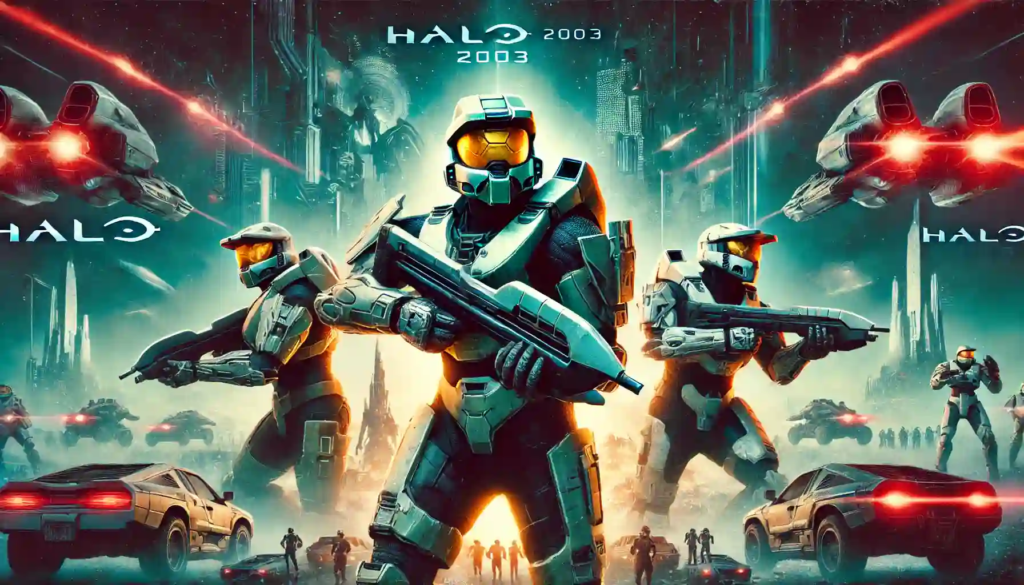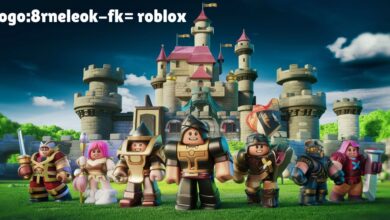Halo (2003) Game Icons Banners: A Nostalgic Journey Through Iconography and Artistry

Introduction
The world of video Halo (2003) Game Icons Banners games is rich with creativity, where stunning visuals, immersive gameplay, and iconic imagery combine to create unforgettable experiences. One such game that revolutionized the gaming industry, Halo (2003) Game Icons Banners especially in the first-person shooter (FPS) genre, is Halo: Combat Evolved (2003). Developed by Bungie Studios and published by Microsoft, Halo set the standard for what gamers should expect from a AAA FPS game, with its masterful combination of storytelling, gameplay mechanics, Halo (2003) Game Icons Banners and exceptional visual design.

One area where Halo stands out is its use of icons and banners Halo (2003) Game Icons Banners These visual elements have played a significant role in how the game has been Halo (2003) Game Icons Banners marketed, presented to players, and how it has been remembered over the years. From the iconic Spartan armor of Master Chief to the detailed banners of the Covenant, these images were more than just decorative—they became symbols of the game’s universe.
This article will take a closer look at the significance of Halo‘s icons and banners from its 2003 release. We’ll examine their role in shaping the identity of the game, how they contributed to its marketing, and how they’ve influenced pop culture. We’ll also explore how Halo‘s visual aesthetics Halo (2003) Game Icons Banners have evolved over the years, continuing to leave their mark on the franchise.
1. The Iconic Master Chief Helmet: The Face of Halo
One of the first things that come to mind when thinking about Halo is the Spartan Halo (2003) Game Icons Banners soldier, Master Chief. He is the very embodiment of the game, and his distinctive green armor and helmet have become some of the most recognizable images in gaming history.
The Design of the Helmet
When you think of Master Chief, you think of the helmet. It is sleek, armored, and almost intimidating. The design itself is minimalistic yet effective—ensuring that the character’s face is hidden. It’s a clever design choice by Bungie that enhances the idea of Master Chief being a mysterious figure, a lone warrior. The iconic visor, a bright green reflecting shield, is the one part of the helmet that players can focus on, giving it both a sense of cold precision and heroism.
The helmet’s simple, reflective surface has become a cultural symbol Halo (2003) Game Icons Banners for Halo. For years, this piece of armor has been synonymous with the game, Halo (2003) Game Icons Banners appearing in almost every promotional material, logo, and cover art.
Marketing and Popularity
One of the most powerful aspects of the Halo franchise is its ability to capture Halo (2003) Game Icons Banners the imagination of players, and much of that begins with the marketing campaign surrounding Master Chief. The helmet is a central part of the visual design for the game. The strategic use of the helmet in Halo’s promotional materials, posters, and banners helped reinforce the idea that this was a game of epic proportions—one that would forever change the way people looked at FPS games.
Master Chief’s image, along with the bold, striking art direction of Halo’s Halo (2003) Game Icons Banners promotional banners, helped establish the identity of the game. These images, combined with the hauntingly atmospheric music and cinematic sequences, created a cohesive sense of adventure and danger.
The Lasting Legacy
Even beyond Halo‘s 2003 release, the Master Chief helmet remains an iconic Halo (2003) Game Icons Banners symbol of the franchise. Whether it’s in the later Halo games or crossovers Halo (2003) Game Icons Banners in other media (such as Fortnite), the image of the green helmet remains strong and instantly recognizable. The helmet continues to stand for both nostalgia and the cutting-edge, high-quality production that defines the Halo universe.
2. The Covenant Banners: An Alien Aesthetic
The Halo universe is not just about the humans, but also the menacing and Halo (2003) Game Icons Banners fascinating alien races that populate its world, most notably the Covenant. Halo (2003) Game Icons Banners These extraterrestrial forces are a major antagonist in the series, and their banners and symbols are as emblematic of Halo as the Master Chief’s armor.
The Covenant Hierarchy and Symbolism
One of the most intriguing aspects of the Covenant is its hierarchical structure. The Halo (2003) Game Icons Banners Covenant is not just a group of aliens fighting for a common cause—they are a theocratic alliance of different species, united under religious belief. Each species has its own symbols, which are often seen on banners, flags, and emblems throughout the game.
The most recognizable iconography is the Covenant’s religious symbols—those seen on their banners are often tied to their belief in the Great Journey. This religious zealotry drives their motives and gives players insight into their worldview. The banners often depict abstract or aggressive shapes—serpentine designs, spiked edges, and other menacing symbols that reflect the alien nature of the Covenant.
Visual Design of Covenant Banners
Covenant banners feature a mix of mysterious, ornate designs, often with intricate shapes, dark colors, and glowing accents. These banners, often hung on the walls of alien ships or displayed on the battlefield, are designed to reflect the splendor and power of the Covenant as a superpower. They are in stark contrast to the more utilitarian banners of the United Nations Space Command (UNSC), which are more practical and straightforward.
The banners typically display insignias of the various Covenant species—Elites, Brutes, and Grunts, each with their own cultural identity represented in the form of their banners. This adds an additional layer of depth to Halo‘s world-building, highlighting the complexity of the Covenant’s structure and the game’s attention to detail.
Thematic Impact
Banners from the Covenant also serve to immerse players in the game’s universe. The bold, alien designs convey the mystique and danger of the Covenant forces. These banners are not simply decorative—they are a visual representation of the different alien races within the Covenant, their beliefs, and their motivations.
Throughout the Halo franchise, these banners have become an integral part of the visual identity of the Covenant, adding to their fearsome and alien appearance. As players venture through the Halo universe, the presence of these banners often suggests an underlying threat, an ever-present reminder of the Covenant’s power and ruthlessness.
3. UNSC and Human Factions: Earth’s Banners and Symbols
While the Covenant represents the alien threat in the Halo universe, the United Nations Space Command (UNSC) is humanity’s primary defense. The UNSC, though a powerful military force, is much more grounded and practical in terms of its design and visual identity.
The Simple, Bold Designs of UNSC Symbols
Unlike the intricate and ornate Covenant banners, the UNSC uses clean, bold designs that represent order, unity, and human resilience. The UNSC banners are often seen emblazoned with the insignia of the UNSC Marine Corps, the Navy, or other military factions. These designs are meant to project strength and discipline, with the flags typically bearing a red, white, and blue color scheme that mirrors real-world military symbolism.
The simplicity of these designs highlights the no-nonsense, gritty nature of the human factions in Halo. While the Covenant is portrayed as a sprawling, religious empire, the UNSC feels more like a beleaguered, underdog force—fighting against overwhelming odds with practicality and precision.
Banners as Strategic Tools
The banners seen in the UNSC are not just visual elements—they also play a part in the game’s storytelling. Throughout the game, banners can be found on key locations, whether it’s on military outposts or aboard UNSC ships. These symbols serve as reminders of the persistence and grit of humanity in the face of overwhelming odds. For the player, the banners help create a sense of connection to the human cause and enhance immersion within the Halo universe.
A Reflection of Humanity’s Will to Survive
In a galaxy filled with alien threats and overwhelming danger, the banners of the UNSC symbolize humanity’s strength and resilience. Unlike the more religious and fearsome banners of the Covenant, the UNSC banners are practical and militaristic, but still imbued with meaning. They serve as a constant reminder of the stakes in the conflict, a way of visually connecting the player with humanity’s fight for survival in an uncertain universe.
4. The Art of Banner Design in Halo: A Deep Dive into the Aesthetics
When talking about the banners in Halo, it’s not just about the meaning or the cultural context behind the designs, but also the visual aesthetics. The banners serve as an extension of the game’s art direction, and they play a crucial role in how players perceive the world.
Color Theory and Its Impact
A major part of the design process behind the banners comes down to color theory. Whether it’s the muted greens and grays of the UNSC or the vibrant purples and blues of the Covenant, the colors on the banners are carefully chosen to reflect the mood and tone of the faction they represent.
For the Covenant, darker, more aggressive colors create a sense of foreboding and danger. The colors evoke a sense of religious zealotry and power. Meanwhile, the UNSC banners use earthy and patriotic colors, creating a sense of strength, perseverance, and human grit.
Typography and Symbolism
Another crucial part of banner design is typography. While the banners in Halo don’t always have text, when they do, the fonts are carefully selected to match the faction’s identity. Whether it’s the clean, bold fonts used in UNSC banners or the


